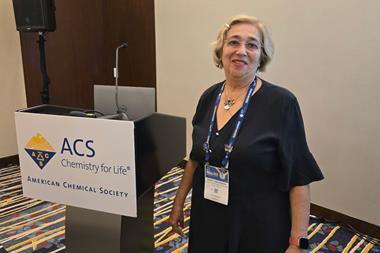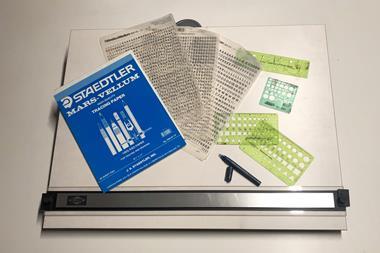Readers discuss chemical emergencies, honey adulturation, and more
Volunteering to stay Chemsafe
I was interested to read the article about the chemical support for emergency responders.
It reminded me of similar support provided by the chemical industry in the UK in the 1980s and 1990s. At that time the Chemical Industries Association set up a scheme called Chemsafe, whereby member companies were encouraged to set up mutual support systems to deal with spillages and accidents involving hazardous materials at manufacturing sites and, more importantly, during storage and transport.
In Kent and Sussex, this was taken to a somewhat higher level, thanks to the activities of the safety team at the ICI Agrochemicals site at Yalding, and the enlightened support of the works manager.
Two vehicles were purchased, one of which was a police-tuned Ford Sierra Estate 4x4, to allow rapid response. Both vehicles were fitted with blue lights and Fire Brigade radios. A team of unpaid volunteer chemists was set up, with supporting engineering staff, to attend incidents on a rota basis, day or night.
Over a period of over 15 years, hundreds of incidents were successfully dealt with, notably at Heathrow and Gatwick, and particularly at the Port of Dover. No one was injured to my knowledge, either within the teams or in the general public.
The example used for training purposes, in the article, was a good one, as I personally attended two incidents involving hydrofluoric acid. The first of these was a major spillage from several drums of acid, which closed a motorway in both directions for over 12 hours. The second resulted in my team chasing animal rights activists around Tunbridge Wells as they sprayed butcher shop windows with hydrofluoric acid. ‘Reckless’ was one description. With acid running down windows onto low sills, a child in a pushchair could easily have come into contact with it, as well as other people brushing past.
At the end of the day, when we thought our work was complete, we were called to an abattoir, where the same acid had been used to destroy the windscreens of its fleet of lorries and vans.
With the closure of the ICI/Zeneca site in the early 2000s, the local support disappeared, and I assume the Chemsafe scheme was wound up. This was great pity, but it is reassuring to note that others are picking up the baton.
Roger Parker FRSC
Via email
Assessing marks of competence
Kristy Turner’s article on chemistry curriculum reviews contained the statement: ‘around 20% was required to pass before the pandemic. So students were gaining passes in level 3 qualifications … showing competency of only one fifth of the examined material’.
This implies that one has to get full marks on any specific part of examined material to show competency, and therefore getting 100% would only show competency, rather than a deeper understanding of the examined material. It also suggests that the questions in the examination are designed just to assess competency, rather than expertise. If instead, four out of five marks per question showed competency, an overall 20% could show competency in 25% of the examined material.
If there are 20 questions, each of five marks, then a student could get one mark for each question, with an overall score of 20%, and in my view not demonstrate competency in anything, just a low level of understanding of everything.
Dave Stone
Basingstoke, UK
Beekeepers are getting stung
It was interesting to read Raychelle Burks’ article on butter adulteration occurring in 1906.
A recent issue in the UK and across Europe is honey adulteration. Beekeepers are experiencing many supermarkets selling ‘honey’ at very low prices that turn out to be adulterated. This issue has become so prevalent in honeys coming from China and other Asian countries, including India, that in the UK the British Beekeepers’ Association has raised the issue with the Department for Environment, Food and Rural Affairs.
A considerable amount of research on how to detect adulteration in honey is going on in a number of EU countries. Estonia seems to be leading the way on suitable methods and DNA metagenomics is showing promise.
Currently testing of honey by food standards labs in the UK appears to be virtually non-existent.
The Chair of the Honey Adulteration Network, Lynne Ingram, recently reported that when using the Estonian lab testing methods on 30 samples submitted from a variety of supermarkets in the UK, 96% of the samples were found to be atypical of honey. Only one (a British-produced honey) passed the testing. These test results replicated those done in 2018, 2019 and 2020.
It would be interesting I think for Chemistry World to publish a more in-depth article on this issue.
Simon Read FRIC
Bexhill on Sea, UK
Paper valuation
I was disheartened to find out that postal copies of the magazine are being reduced to bimonthly (Chemistry World, May 2025, p1). I have a three-year-old daughter and try to set a good example by not spending time on screens around her, so I enjoy reading the print magazine. We even talk about the pictures sometimes!
I’m never going to get time, or want to make the time, to read a magazine on a computer or phone. There’s enough time spent on screens at work. I know print is expensive but don’t underestimate the value of being able to squeeze in 10 minutes reading here and there to find out what’s happening in the world of chemistry. Thanks for keeping some print issues and not going fully online.
Laura Newsome CChem MRSC
Via email
Editor: We know that many members value the print edition of the magazine, and it will remain an important part of how we serve our readers. We’re excited to bring you the new version of print Chemistry World and as we work on it, we’d like you to help guide our decisions. You should have received an email inviting members to complete a short survey on our bimonthly edition, which you can also find at rsc.li/CWprintsurvey. I hope you’ll take the time to give us your thoughts so we can make sure that Chemistry World continues to meet your needs in both print and digital formats.
Chemistry World welcomes letters, which should be concise (normally fewer than 300 words) and timely. Those selected for publication are subject to editing for clarity and length. Letters should be marked ‘for publication’ and sent to chemistryworld@rsc.org
We do not routinely acknowledge letters.












No comments yet